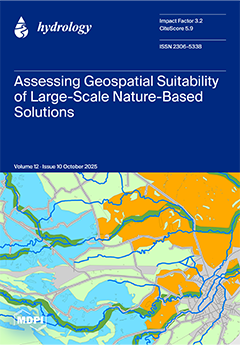Open AccessFeature PaperArticle
A Geospatial Assessment Toolbox for Spatial Allocation of Large-Scale Nature-Based Solutions for Hydrometeorological Risk Reduction
by
Adam Mubeen, Vishal Balaji Devanand, Laddaporn Ruangpan, Zoran Vojinovic, Arlex Sanchez Torres, Jasna Plavšić, Natasa Manojlovic, Guido Paliaga, Ahmad Fikri Abdullah, João P. Leitão, Agnieszka Wojcieszak, Marzena Rutkowska-Filipczak, Katarzyna Izydorczyk, Tamara Sudar, Božidar Deduš, Draženka Kvesić, Lyudmil Ikonomov and Valery Penchev
Viewed by 748
Abstract
The compounding effects of hydrometeorological hazards are being driven by climate change. As urban areas expand, this leads to degradation of the surrounding environment and exposes more people to hazards. Growing losses show that conventional approaches to addressing these issues can compound these
[...] Read more.
The compounding effects of hydrometeorological hazards are being driven by climate change. As urban areas expand, this leads to degradation of the surrounding environment and exposes more people to hazards. Growing losses show that conventional approaches to addressing these issues can compound these problems. Over the last few decades, nature-based solutions (NBSs) have become an increasingly popular alternative. These measures, inspired by natural processes, have shown potential for reducing hazards by complementing traditional approaches and providing co-benefits in the form of eco-system services. With the adoption of NBSs becoming a more mainstream approach, there is a need for tools that support the planning and implementation of interventions. Geospatial suitability assessment is a part of this planning process. Existing tools are limited in their application for large-scale measures. This paper intends to improve this by building upon a multi-criteria analysis (MCA)-based approach that incorporates biophysical and land use criteria and conditions for mapping the suitability of large-scale NBSs. The methodology was developed and tested on six sites to assess the suitability of floodplain restoration, retention or detention, afforestation, and forest buffer strips. The resulting suitability maps also show potential for combining two or more measures for greater risk reduction.
Full article
►▼
Show Figures





